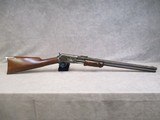 |
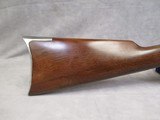 |
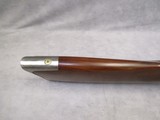 |
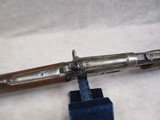 |
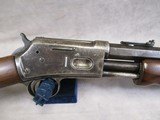 |
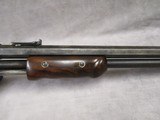 |
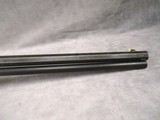 |
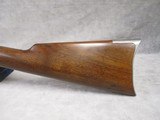 |
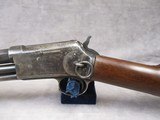 |
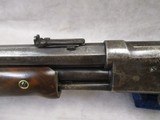 |
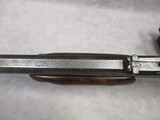 |
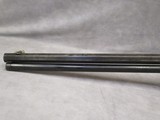 |
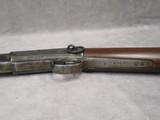 |
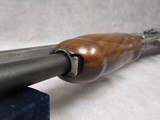 |
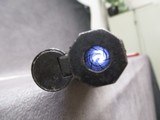 |

Colt Lightning Carbine Medium Frame .32-20 WCF Mfg. 1887
Guns International #: 102788929 Seller's Inventory #: 24080086
Category: Colt Rifles - Lightning - Colt Rifles - Antique
Seller's Information
When emailing or calling sellers direct, please mention that you saw their listing on GunsInternational.com
Seller: Shooter's Supply, LLC.
Member Since: 3/16/16
First Name: Patrick
Last Name: Brown
State: Tennessee
Zip: 37343
Country: United States
Phone: (423) 875-4868
Number of Active Listings: 54
Total Number of Listings: 1351
Seller: FFL Dealer
Return Policy: 3 day inspection and return policy on used guns.
We normally ship USPS Priority Mail which should be 2-day ship. Shipping is actual cost with a minimum of $30.00 for pistols and $50.00 for rifles/shotguns to ship to most of the 48 contiguous states. Shipping to Alaska may require an extra fee. Shipping insurance is available upon request for an extra fee. We cannot do international sales. As of November 2019, we no longer ship guns to California and Hawaii.
Payment Types Accepted: Visa, Master Card, American Express, USPS Money Order. NO CREDIT CARD FEES!!!
About Us: We are a small family owned business located in Hixson, Tennessee. Do you have firearms at home collecting dust? We have a lively consignment business. Our fee is 20% with a $50 minimum. Firearms are consigned for a an average period of 180 days but the length of period is negotiable. We also do handgun carry permit classes for the state of Tennessee. We have a nice indoor shooting range with reasonable rates. Please check us out at shooterssupply.
Description:
The Lightning Medium Frame was Colt’s first slide-action rifle. It was chambered in three of the most popular cartridges of the day: the .32-20, the .38-40, and the .44-40. Like the Winchester Model 1873 rifle, the original Lightning rifle was NOT chambered for the .45 Colt round as that cartridge used copper cases with a small, folded rim which would have been too weak to operate with the rifle’s extractor. The .45’s original case design was intended for use with the ejector rod of a Peacemaker, not the metal claw extractors found on rifles. The Lightning was originally designed by a Dr. William H. Elliot who was a dentist by trade. He was also an inventor although for him it was more of a hobby. He liked to tinker with various mechanical devices among other things and is said to have come up with at least 130 inventions over the course of his lifetime. As he lived in Ilion, New York, he first took to Remington, who surprisingly, were not interested in the design. Given Remington’s later prolific line of slide action rifles including the legendary Models 14, 141, and 7600, this decision would seem to be a notable error on their part. Dr. Elliot next took his design to Colt, who were very interested in his design. In 1884, Colt introduced their new rifle to the U.S. market. It initially came in two variants: a rifle with a 26” barrel and 15+1 capacity, and a 20” carbine with 12+1 capacity. The rifle’s design was so slick and easy to operate that Colt dubbed it the “Lightning”. Although the rifle was never really as popular as the Winchester ’73, it still sold very well with 89,777 manufactured between 1884 and 1902. It had a very dedicated following thanks to its ability to shoot the same cartridges that the Peacemaker was usually chambered for, similar to the ’73 lever action. Ironically, the Lightning rifle became a bigger success in the 21st century in the form of reproductions produced by Uberti, Beretta, AWA, and even Taurus.
The example shown here was produced in 1887 and obviously has seen quite a bit of use. The wooden furniture is obviously a replacement set. It is not a perfect fit but is tight enough for the job. The rifle’s original finish has worn away but there is some grey patina and original bluing left on certain parts. Fortunately, pitting of the metal on the external surfaces has been kept to a minimum. The rifle is chambered for the .32-20 WCF (aka .32 Colt Lightning), and like every other rifle or pistol that the author has seen chambered in that caliber, the bore does exhibit some pitting. The rifling is still well defined and should provide a decent level of accuracy. The action is a bit tight, but this could likely be fixed with a simple cleaning and lubricating of the various internal parts. The markings on the barrel are in superb shape given the rifle’s age (137 years). The rifle has most definitely never been refinished. Some of the screws exhibit wear at the edges but only a few of them show heavy wear. The Colt Lightning is one of the most difficult of Old Western guns to find in the modern age. While original Winchester 73’s are a fairly easy to find, the Lightning is much less so. Don’t pass on the opportunity to own one of these superb rifles.
The Lightning Medium Frame was Colt’s first slide-action rifle. It was chambered in three of the most popular cartridges of the day: the .32-20, the .38-40, and the .44-40. Like the Winchester Model 1873 rifle, the original Lightning rifle was NOT chambered for the .45 Colt round as that cartridge used copper cases with a small, folded rim which would have been too weak to operate with the rifle’s extractor. The .45’s original case design was intended for use with the ejector rod of a Peacemaker, not the metal claw extractors found on rifles. The Lightning was originally designed by a Dr. William H. Elliot who was a dentist by trade. He was also an inventor although for him it was more of a hobby. He liked to tinker with various mechanical devices among other things and is said to have come up with at least 130 inventions over the course of his lifetime. As he lived in Ilion, New York, he first took to Remington, who surprisingly, were not interested in the design. Given Remington’s later prolific line of slide action rifles including the legendary Models 14, 141, and 7600, this decision would seem to be a notable error on their part. Dr. Elliot next took his design to Colt, who were very interested in his design. In 1884, Colt introduced their new rifle to the U.S. market. It initially came in two variants: a rifle with a 26” barrel and 15+1 capacity, and a 20” carbine with 12+1 capacity. The rifle’s design was so slick and easy to operate that Colt dubbed it the “Lightning”. Although the rifle was never really as popular as the Winchester ’73, it still sold very well with 89,777 manufactured between 1884 and 1902. It had a very dedicated following thanks to its ability to shoot the same cartridges that the Peacemaker was usually chambered for, similar to the ’73 lever action. Ironically, the Lightning rifle became a bigger success in the 21st century in the form of reproductions produced by Uberti, Beretta, AWA, and even Taurus.
The example shown here was produced in 1887 and obviously has seen quite a bit of use. The wooden furniture is obviously a replacement set. It is not a perfect fit but is tight enough for the job. The rifle’s original finish has worn away but there is some grey patina and original bluing left on certain parts. Fortunately, pitting of the metal on the external surfaces has been kept to a minimum. The rifle is chambered for the .32-20 WCF (aka .32 Colt Lightning), and like every other rifle or pistol that the author has seen chambered in that caliber, the bore does exhibit some pitting. The rifling is still well defined and should provide a decent level of accuracy. The action is a bit tight, but this could likely be fixed with a simple cleaning and lubricating of the various internal parts. The markings on the barrel are in superb shape given the rifle’s age (137 years). The rifle has most definitely never been refinished. Some of the screws exhibit wear at the edges but only a few of them show heavy wear. The Colt Lightning is one of the most difficult of Old Western guns to find in the modern age. While original Winchester 73’s are a fairly easy to find, the Lightning is much less so. Don’t pass on the opportunity to own one of these superb rifles.
The Lightning Medium Frame was Colt’s first slide-action rifle. It was chambered in three of the most popular cartridges of the day: the .32-20, the .38-40, and the .44-40. Like the Winchester Model 1873 rifle, the original Lightning rifle was NOT chambered for the .45 Colt round as that cartridge used copper cases with a small, folded rim which would have been too weak to operate with the rifle’s extractor. The .45’s original case design was intended for use with the ejector rod of a Peacemaker, not the metal claw extractors found on rifles. The Lightning was originally designed by a Dr. William H. Elliot who was a dentist by trade. He was also an inventor although for him it was more of a hobby. He liked to tinker with various mechanical devices among other things and is said to have come up with at least 130 inventions over the course of his lifetime. As he lived in Ilion, New York, he first took to Remington, who surprisingly, were not interested in the design. Given Remington’s later prolific line of slide action rifles including the legendary Models 14, 141, and 7600, this decision would seem to be a notable error on their part. Dr. Elliot next took his design to Colt, who were very interested in his design. In 1884, Colt introduced their new rifle to the U.S. market. It initially came in two variants: a rifle with a 26” barrel and 15+1 capacity, and a 20” carbine with 12+1 capacity. The rifle’s design was so slick and easy to operate that Colt dubbed it the “Lightning”. Although the rifle was never really as popular as the Winchester ’73, it still sold very well with 89,777 manufactured between 1884 and 1902. It had a very dedicated following thanks to its ability to shoot the same cartridges that the Peacemaker was usually chambered for, similar to the ’73 lever action. Ironically, the Lightning rifle became a bigger success in the 21st century in the form of reproductions produced by Uberti, Beretta, AWA, and even Taurus.
The example shown here was produced in 1887 and obviously has seen quite a bit of use. The wooden furniture is obviously a replacement set. It is not a perfect fit but is tight enough for the job. The rifle’s original finish has worn away but there is some grey patina and original bluing left on certain parts. Fortunately, pitting of the metal on the external surfaces has been kept to a minimum. The rifle is chambered for the .32-20 WCF (aka .32 Colt Lightning), and like every other rifle or pistol that the author has seen chambered in that caliber, the bore does exhibit some pitting. The rifling is still well defined and should provide a decent level of accuracy. The action is a bit tight, but this could likely be fixed with a simple cleaning and lubricating of the various internal parts. The markings on the barrel are in superb shape given the rifle’s age (137 years). The rifle has most definitely never been refinished. Some of the screws exhibit wear at the edges but only a few of them show heavy wear. The Colt Lightning is one of the most difficult of Old Western guns to find in the modern age. While original Winchester 73’s are a fairly easy to find, the Lightning is much less so. Don’t pass on the opportunity to own one of these superb rifles.
Price: $2,850.00
Handgun Caliber: .32-20 Winchester (.32 WCF, .32-20 Marlin, .32 Colt Lightning )
Manufacturer: Colt's PT. F.A. Mfg. Co.
Model: Lightning Carbine Medium Frame
Serial Number: 23575
Barrel Length: 20.0 inches (508 mm)
Bore: 6 grooves, 1:20 inches (1 in 508 mm) RH twist
Ejectors: Ejection via pump operation
Condition: Used - Antique
Barrels: Steel
Barrel Type: Octagonal
Action: Pump-Action aka Slide-Action
Triggers: Single
Stock: Wood
Fore End: Wood
Butt Pad: Metal plate
LOP: 13.25 inches (336.55 mm)
Finish: Patina
Weight: 6 lbs. 12.6 oz.
Sights: V-notch rear with integral ladder, blade front sight, sight radius 16.0 inches (406 mm)
Manufacture Date: 1887